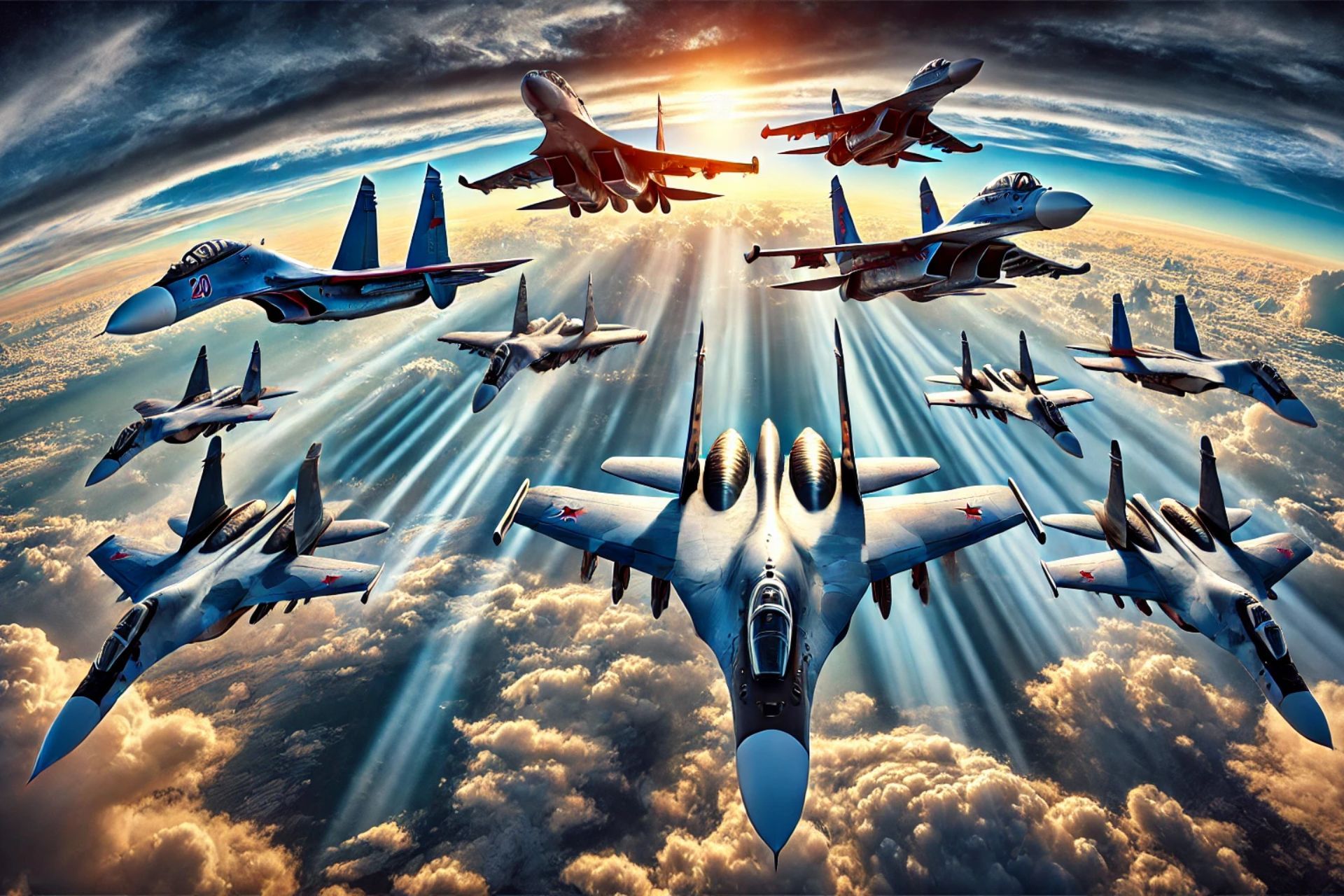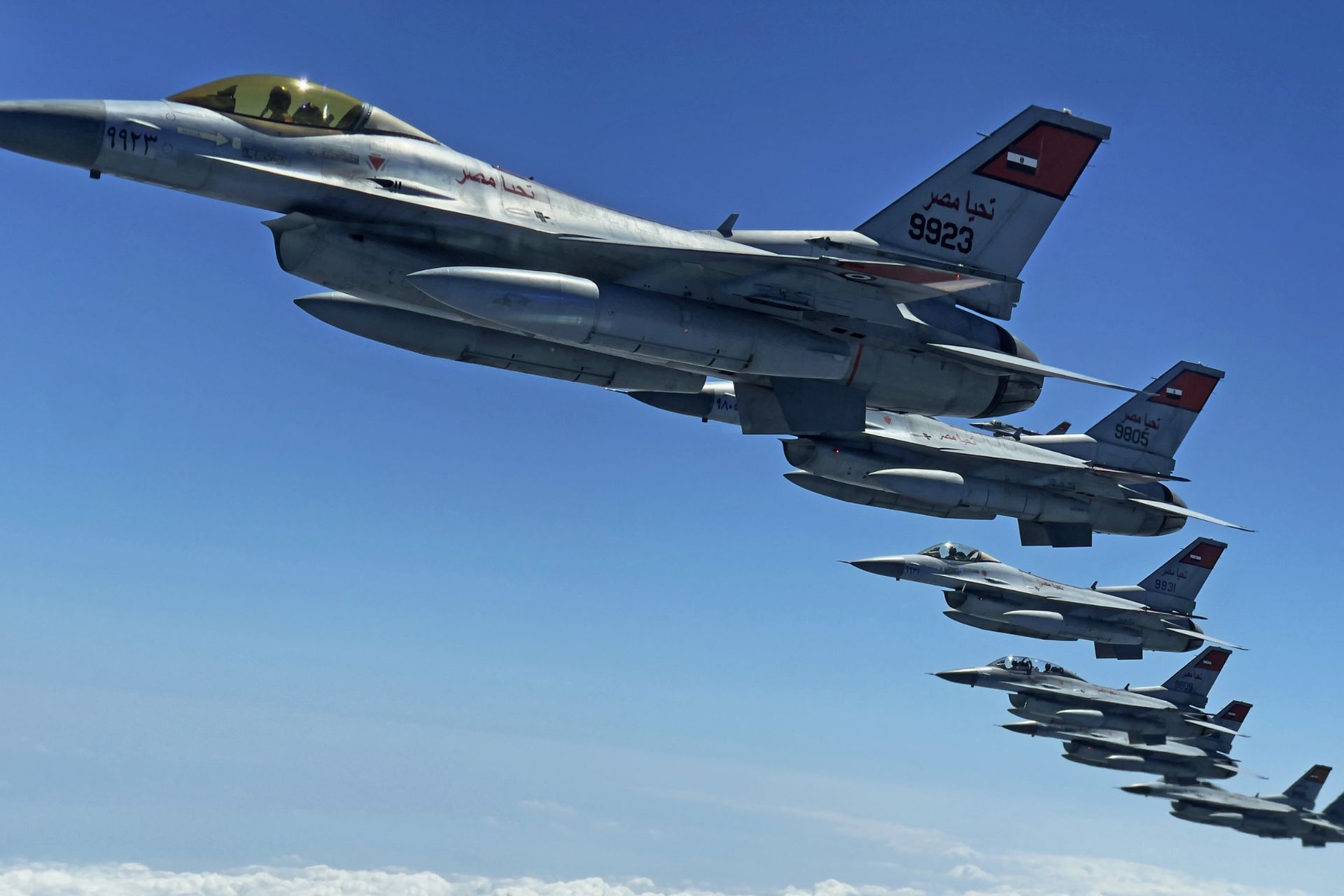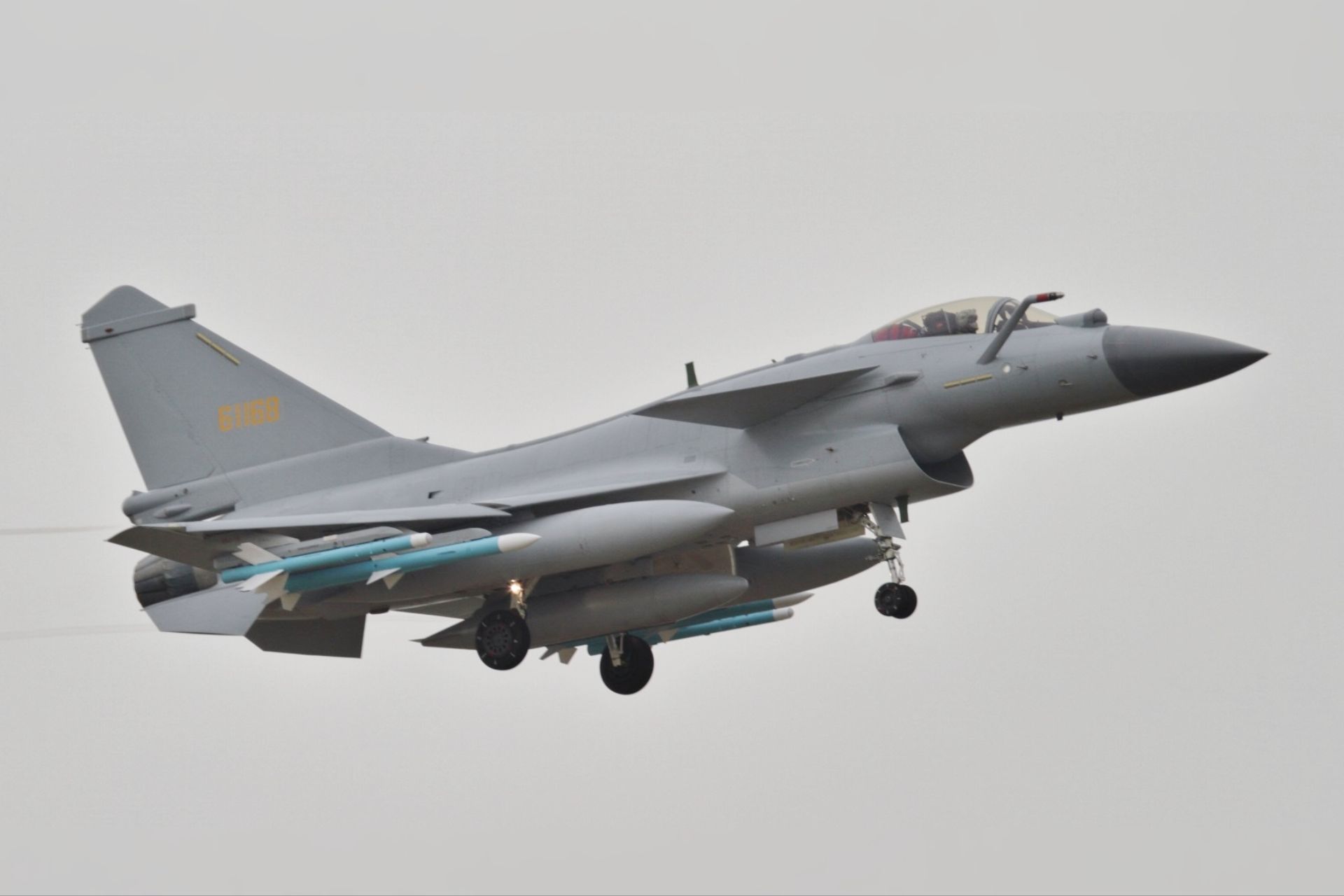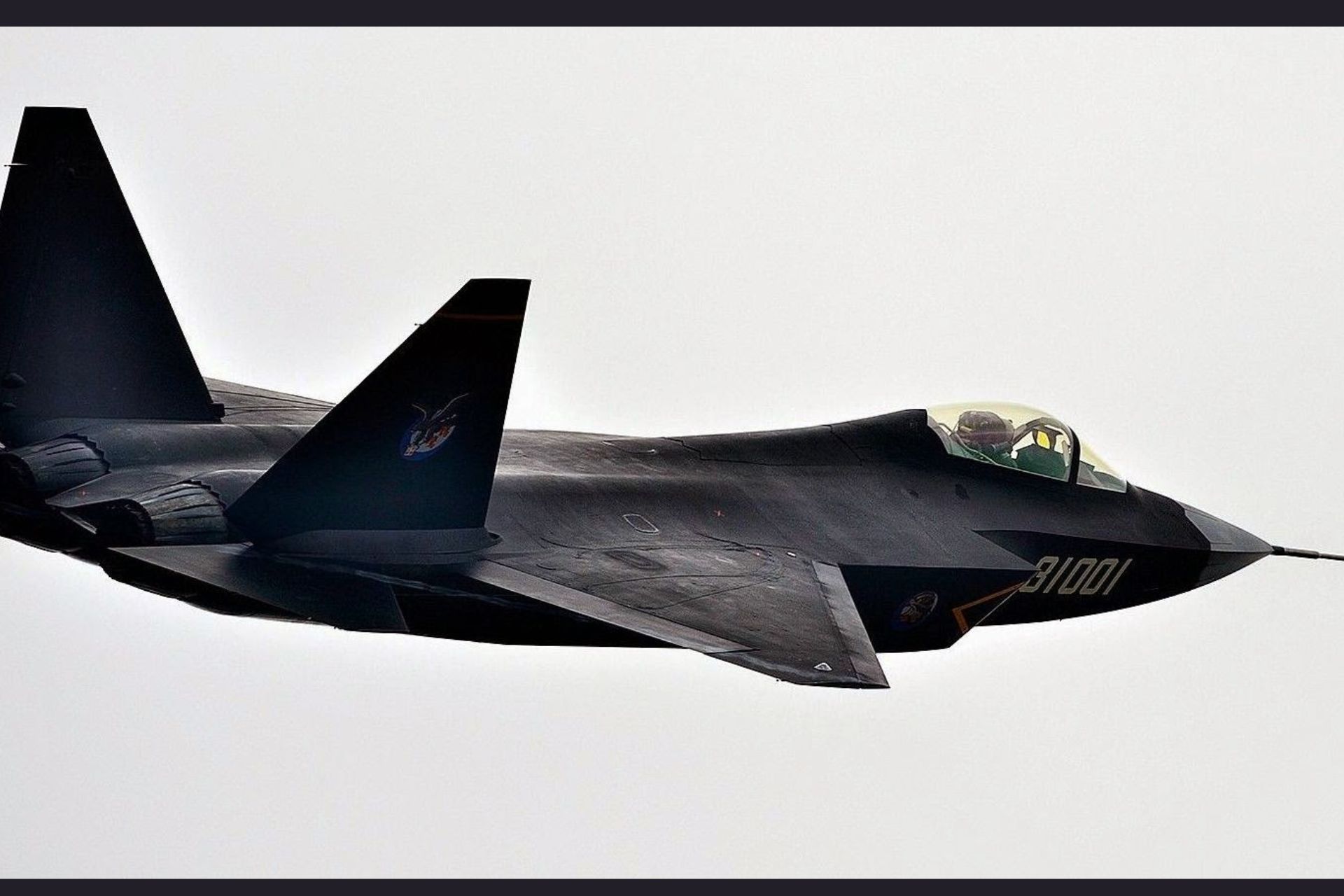Breaking News
Analysis: Russia No Longer Leads in Low-Cost, Long-Lifespan Military Jets as Egypt Seeks Alternative Spending.
Facing budget constraints, the Egyptian Air Force (EAF) is seeking to modernize its fleet while maintaining a delicate balance between cost, efficiency, and diplomatic repercussions. The EAF has traditionally alternated between Soviet/Russian and Western suppliers, particularly to avoid sanctions and to prevent becoming dependent on a single provider. However, due to Russia's inability to continue supplying aircraft, the Commander of the Egyptian Air Force, General Mahmoud Fouad Abdel Gawad, met with his Chinese counterpart, General Chang Dingqiu, in Beijing. During this meeting, discussions focused on the potential sale of Chinese J-10C and J-31 fighters to Egypt, reflecting the country's intention to gradually distance itself from Russian equipment.

IA vision of russian fleet, image based on IA (Picture source: Army Recognition)
Egyptian Air Force: A Symbol of Diversity
Before 1979, the year when President Anwar Sadat signed a peace agreement with Israel, the Egyptian Air Force was primarily equipped with Soviet-origin aircraft, some of which were supplied by China after ties with Russia loosened in 1976. After this agreement, Egypt diversified its fighter acquisitions, turning to the United States and France to complement the Soviet and Chinese deliveries. This dual acquisition approach has since continued. In 2015, Egypt acquired 24 Dassault Rafale F3-R fighters while simultaneously ordering 46 MiG-29M/M2. In 2018, it ordered 24 heavy Sukhoi Su-35S fighters.
While the MiGs were delivered starting in April 2017, the Su-35S remained undelivered, both due to the threat of U.S. sanctions under the CAATSA (Countering America's Adversaries Through Sanctions Act) and, more significantly, due to the cessation of Western component supplies following Russia's invasion of Ukraine, as these components had previously been integrated into Russian aircraft. Egypt ultimately refused the delivery of these aircraft, which are now reportedly being transferred to Iran. Egypt's request for 20 F-35A fighters was also denied in 2019, pushing the country to bolster its fleet with an additional 30 Rafales in 2021.
Today, Egypt possesses the tenth-largest air fleet in the world, and also one of the most diverse. However, operating Western aircraft alongside older Russian and Chinese fighters presents interoperability challenges and hampers Egypt's air defense capabilities. Technicians must be trained on distinct systems, and the variety of aircraft types complicates their operational integration, as aircraft from different suppliers cannot, for instance, designate a target for each other. Nevertheless, Egypt appears to have implemented a compatible Identification Friend or Foe (IFF) system for all aircraft types and is working on developing a universal data link system to improve interoperability.

Egyptian Air force during training with US air national gard on Dobbing Air reserve base in 2022 (Picture source: US Dod)
The Limitations of Russian Aircraft
The Egyptian Air Force uses MiG-29s as airborne refueling tankers for "buddy-buddy" refueling of its Rafales, thanks to the compatibility of their in-flight refueling (IFR) systems. However, Russian aircraft are not compatible with the types of missiles and bombs used by the EAF's F-16s and Rafales. Additionally, the MiG-29s lack active electronically scanned array (AESA) radars, and the beyond-visual-range air-to-air missiles (BVRAAMs) they carry are inferior to their American and European counterparts. While the MiG-29s cannot exchange data with Egypt's American aircraft, Cairo hoped they could function as a "force within a force" to enhance their limited air-to-air capabilities. This is a difficult gamble, given that modern doctrine and tactics emphasize cooperation and connectivity.
Regarding the aborted purchase of Sukhoi Su-35S aircraft, these were shown to be technically inferior to the Rafale, particularly during competitions in South Korea in 2002 and Brazil in 2014. In South Korea, the Rafale received the highest scores in all categories, winning the technical-operational trials by a wide margin and significantly outperforming the Su-35, which was disadvantaged from the start due to its inferior avionics and high maintenance costs. The same happened in Brazil, where the Su-35 was immediately eliminated. Today, the Su-35 is even more disadvantaged by the absence of certain French components following the ban on access to Thales-supplied equipment after the invasion of Ukraine.
China as an Alternative?
China's non-interventionist policy and strategic approach to arms exports are becoming increasingly attractive to Egypt, as Beijing does not impose political conditions. This policy, combined with competitive prices and technology that some consider equivalent to, or even superior to, Russian offerings, makes China an appealing supplier for Egypt's defense needs, with particular interest in the J-10C and FC-31.
The Chengdu J-10C is a 4.5-generation multirole fighter developed by the Chengdu Aircraft Industry Corporation (CAC). It is powered by a Chinese WS-10B engine and can reach a maximum speed of approximately Mach 2.0 with a range of 1,850 km. The J-10C is equipped with a KLJ-7A active electronically scanned array (AESA) radar, which, although more advanced than the PESA radar of the MiG-29, has notable limitations. During exercises against Thai Gripen-C fighters, the AESA radars of the Chinese J-10C and J-11 A/B fighters proved less effective than the older PS-05/A mk.4 PESA radar. As a result, China suffered disastrous outcomes in both short-range (WVR) and long-range (BVR) engagements, with the J-10A/B losing 40 to 0 against the Thai Gripens.
In terms of electronic warfare, the J-10C is equipped with electronic reconnaissance pods and an infrared search and track (IRST) sensor, enhancing its ability to detect and engage targets in various combat environments. Egypt is reportedly interested in acquiring 11 J-10C aircraft, which would complement, rather than replace, the MiG-29 fleet. This would allow the Egyptian Air Force to modernize its fleet with advanced technology while maintaining a favorable cost-effectiveness ratio.

A J-10B carrying PL-8 and PL-12 air-to-air missiles landing at Zhuhai Jinwan airport ahead of Airshow China 2018 (Picture source: wikimedia)
The Shenyang J-31: A Fifth-Generation Aircraft with Capabilities Below Those of the Rafale
The Shenyang J-31, or FC-31, is a fifth-generation stealth fighter developed by the Shenyang Aircraft Corporation. It is powered by two RD-93 engines, reaching a maximum speed of Mach 1.8 and has a range of 4,000 km. The J-31 incorporates stealth features such as diverterless supersonic inlets and internal weapon bays, thereby reducing its radar signature. It is equipped with a KLJ-7A AESA radar, an infrared search and track (IRST) system, and an electro-optical targeting system (EOTS).
However, China has not yet achieved the necessary maturity in the manufacture of advanced military composites and lacks the mass production capability to produce integrated composite structures for the aerospace industry. As a result, the J-31 primarily uses a structure made of steel, aluminum, and titanium, which reduces the aircraft's radar stealth. China also relies on European and Russian supplies to develop composite structures, which means it may have used a simple paint rather than a true Radar Absorbent Material (RAM) coating on its composite structure.
The radar signature of the J-31, whose information is not publicly available, is nevertheless estimated to be less effective than that of many so-called fourth-generation fighters. The RD-93 engines, while supposedly efficient, produce black smoke plumes, which can compromise the aircraft's visual stealth, while their lack of masking can reduce the aircraft's thermal stealth. The J-31 is theoretically designed for a wide range of missions, including air defense, close support, bombing, and suppression of enemy air defenses. It offers integrated logistics capability and a good price-performance ratio (although the actual cost of maintaining operational readiness is unknown), which could make it attractive.
Given the current avionics, electronics, radar, and design systems used in the FC-31, it is highly likely that it would also be outperformed by the Indian Rafale or even the Taiwanese F-16V. The first public demonstrations in 2014 revealed aerodynamic issues, with a notable loss of energy during maneuvers, which could affect its performance.
The J-31, while less capable but also less expensive than the Rafale, could nonetheless offer an economical solution for specific missions, such as regular air patrols or high-intensity deployments. The aircraft's classification as a fifth-generation fighter is also a compelling argument for political power, although the operational reality of such a definition does not guarantee effectiveness.

Chinese FC-31 during demonstration (Picture source: reddit)
What About the United States?
The United States provides Egypt with $1.3 billion in annual military aid, in the form of credits for Foreign Military Sales (FMS) purchases. However, this generosity comes with the restriction that Israel must maintain a qualitative and quantitative military superiority in the region, which prevents the sale of certain advanced weapons, such as AIM-120C and AIM-9X air-to-air missiles on F-16s, severely limiting Egypt's air defense capabilities. So far, France has also not provided MBDA Meteor BVRAAM air-to-air missiles but has sold SCALP air-launched cruise missiles and Safran AASM precision air-to-ground munitions.
Having been deprived of F-15s for nearly 40 years, Egypt naturally turned to Russia with the purchase of MiG-29s. However, in March 2022, General Frank McKenzie announced his intention to supply Egypt with F-15s. Israel's consent remains crucial for any sale of these aircraft to Cairo, which, while awaiting final confirmation, prefers to negotiate with China.
It is, however, difficult to imagine that Egypt could acquire modern Chinese fighters under the threat of the CAATSA law, the application of which would have serious consequences for trade relations with the United States and significant repercussions on the operability of the Egyptian armed forces. Given the risks, it is also reasonable to question whether the interest expressed in the J-10C and J-31 fighters is genuine or rather a tactic to secure better concessions from Washington. In any case, the operational management of five different types of combat aircraft provided by three suppliers will prove to be a logistical and maintenance headache for the Egyptian Air Force specialists.


























